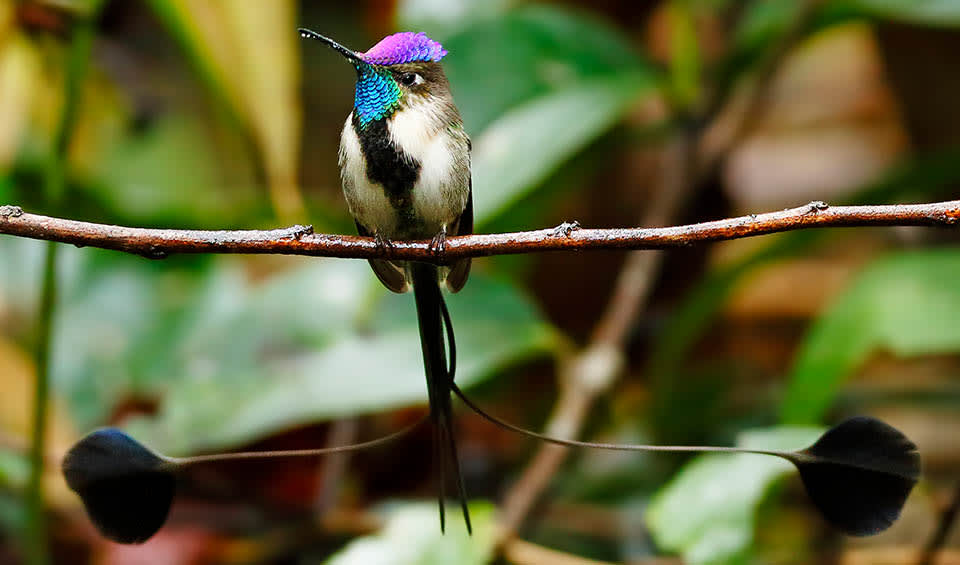Trochilidae – Hummingbirds
The adaptations in their flight and skeletal muscles allow them to hover and show the unique aerial display of both forward and backward flight
Hummingbirds are the smallest bird species in the world and are exclusive to the Americas. These birds are renowned for their vibrant plumage, high metabolic rate, and unique flight capabilities.
Hummingbirds are primarily nectarivores, relying on flower nectar for energy to sustain their rapid wingbeats, which can exceed 50 beats per second in some species. Their diet is occasionally supplemented with small insects and spiders, providing essential proteins and fats. The high metabolic rate of hummingbirds requires them to feed frequently, sometimes visiting hundreds of flowers daily.
The sexual dimorphism in hummingbirds is notable, with males being more brightly colored than females. This bright plumage is crucial in courtship displays, where males perform elaborate aerial maneuvers to attract mates. Females, however, often have more subdued colors, which can aid in camouflage while nesting.
The size of hummingbirds varies across the family, with the smallest being the bee hummingbird (Mellisuga helenae) of Cuba, weighing less than 2 grams (0.07 ounces), and the largest being the giant hummingbird (Patagona gigas) found in South America, which can weigh between 19 and 21 grams (0.67 to 0.74 ounces).
The diversity of bill shapes among hummingbirds reflects coevolution with the flowers from which they feed. Long, curved bills allow some species to extract nectar from flowers with long corolla tubes, while others have shorter, straight bills suited to different floral shapes. This specialization helps reduce competition for food resources among species.
Despite their delicate appearance, hummingbirds are tenacious and can be fiercely territorial. They often engage in aerial dogfights to defend their feeding territories from intruders, using their needle-like bills as weapons if necessary.
Hummingbirds are also renowned for their flight skills, being the only birds capable of hovering and flying backward. Their wing structure allows for a full 360-degree rotation, providing unparalleled maneuverability in the air.
Genera in this family
They sport beautiful feathers in vibrant shades of blue, green, and gold
A unique group of hummingbirds living high up in the North and Central American mountains
A genus of hardy hummingbirds found in the various landscapes of the Americas
Famous for their brilliant iridescent colors, compact size, and rapid, energetic flight
Home to the two smallest birds on our planet
Playful and curious, often chasing each other through the flowers or perching on branches
Let’s all agree that it’s the most popular and charismatic species of hummingbird that will leave you awe
Named for its breathtaking throat that seems to capture the colors of a sunset









